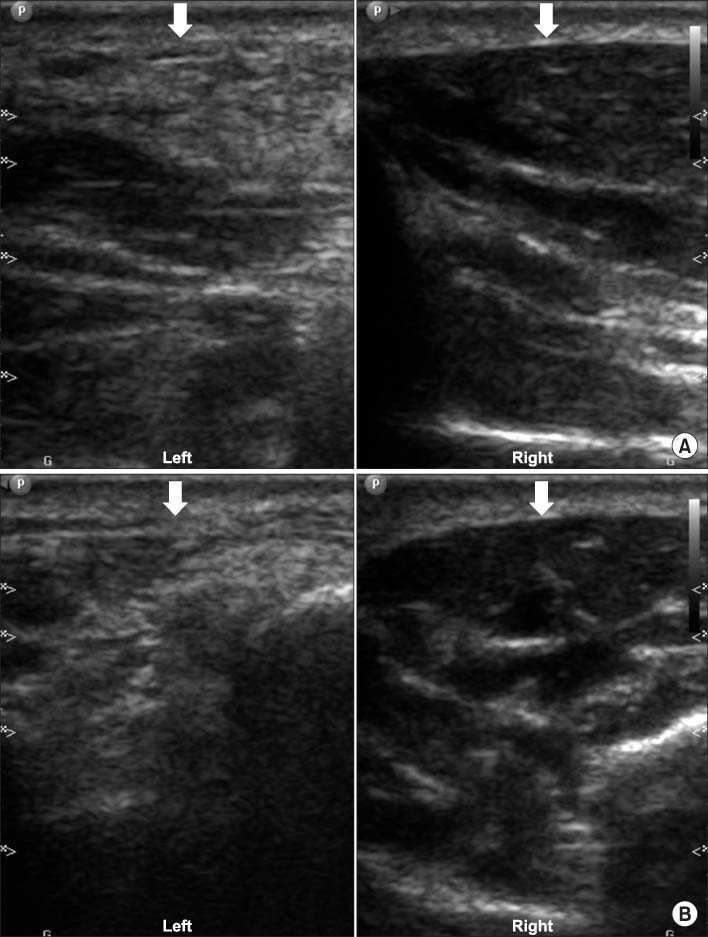J Korean Orthop Assoc.
2014 Aug;49(4):307-311. 10.4055/jkoa.2014.49.4.307.
Complex Regional Pain Syndrome Following Percutaneous Trigger Thumb Release
- Affiliations
-
- 1Department of Orthopaedic Surgery, National Health Insurance Service Ilsan Hospital, Goyang, Korea. esmeron@naver.com
- KMID: 2185190
- DOI: http://doi.org/10.4055/jkoa.2014.49.4.307
Abstract
- Trigger finger is one of the most common causes of hand pain and disability. Persistent trigger finger after conservative treatment has been managed with surgical release of the A1 pulley. Percutaneous A1 pulley release is being increasingly performed and many authors have reported comparable outcomes with open surgical release. However, complications have been reported, including incomplete release, flexor tendon injury, and neurovascular injury due to the blind nature of the procedure. We report on a case of a 49-year-old female who presented with features of a type I complex regional pain syndrome (CRPS) following percutaneous A1 pulley release. CRPS is a relatively common complication occurring after trauma and surgical procedures of the upper extremities. We experienced a case of CRPS following percutaneous A1 pulley release which was treated effectively following early diagnosis and through a multidisciplinary approach including physical therapy and medication.
MeSH Terms
Figure
Reference
-
1. Marks MR, Gunther SF. Efficacy of cortisone injection in treatment of trigger fingers and thumbs. J Hand Surg Am. 1989; 14:722–727.
Article2. Gilberts EC, Beekman WH, Stevens HJ, Wereldsma JC. Prospective randomized trial of open versus percutaneous surgery for trigger digits. J Hand Surg Am. 2001; 26:497–500.
Article3. Dierks U, Hoffmann R, Meek MF. Open versus percutaneous release of the A1-pulley for stenosing tendovaginitis: a prospective randomized trial. Tech Hand Up Extrem Surg. 2008; 12:183–187.4. Pope DF, Wolfe SW. Safety and efficacy of percutaneous trigger finger release. J Hand Surg Am. 1995; 20:280–283.
Article5. Ha KI, Park MJ, Ha CW. Percutaneous release of trigger digits. J Bone Joint Surg Br. 2001; 83:75–77.
Article6. Harden RN, Bruehl S, Stanton-Hicks M, Wilson PR. Proposed new diagnostic criteria for complex regional pain syndrome. Pain Med. 2007; 8:326–331.
Article7. Merskey H, Bogduk N. Classification of chronic pain: descriptions of chronic pain syndromes and definitions of pain terms. 2nd ed. Seattle: IASP Press;1994. p. 41–42.8. Pak TJ, Martin GM, Magness JL, Kavanaugh GJ. Reflex sympathetic dystrophy. Review of 140 cases. Minn Med. 1970; 53:507–512.9. Johnson E, Pierpont Y, Salas R, Naidu D, Payne W. Complex regional pain syndrome following trigger finger release. Int J Hand Surg [Internet]. 2008. 2:cited 2014 Jan 1. Available from: http://ispub.com/IJHS/2/2/3580.10. Żyluk A, Puchalski P. Complex regional pain syndrome: observations on diagnosis, treatment and definition of a new subgroup. J Hand Surg Eur Vol. 2013; 38:599–606.
Article
- Full Text Links
- Actions
-
Cited
- CITED
-
- Close
- Share
- Similar articles
-
- Percutaneous A1 Pulley Release of Locked Trigger Thumb in Children
- A Prospective Study of Bowstringing after A1 Pulley Release of Trigger Thumb: Percutaneous versus Open Technique
- Percutaneous Release of Trigger Gingers
- Ultrasound-Guided Percutaneous Release of the Trigger Thumb
- Additional Pulley in the Two Cases of Trigger Thumb


